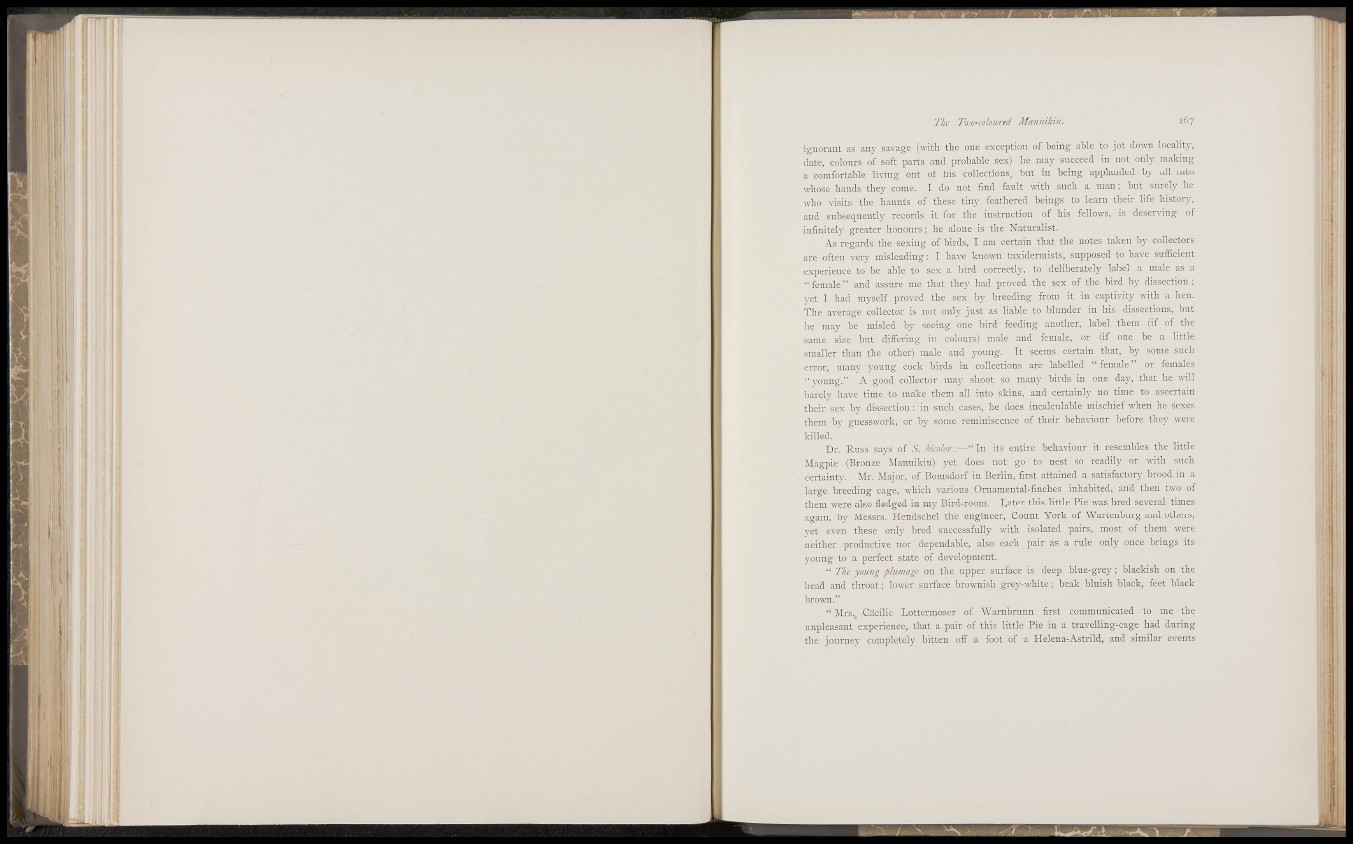
The Tiw-colound Matmikin. 257
) ^
«• 1, 1
i : i' i
f i ^ •
i li
ignorant as any savage (with tlie one exception of being able to jot clown locality,
date, colours of soft parts and probable sex) be may succeed in not only making
a comfortable living out of bis collections, but in being applauded by all into
wbose hands tbey come. I do not find fault with such a man; but surely he
who visits the haunts of these tiny feathered beings to learn their life histor}',
and subsequently records it for the instruction of his fellows, is deserving of
infinitely greater honours ; he alone is the Naturalist.
As regards the sexing of birds, I am certain that the notes taken by collectors
are often very misleading: I have known taxidermists, supposed to have sufficient
experience to be able to sex a bird correctly, to deliberately label a male as a
" female" and assure me that they had proved the sex of the bird by dissection :
yet I had myself proved the sex by breeding from it in captivity with a hen.
The average collector is not only just as liable to blunder in his dissections, but
he may be misled by seeing one bird feeding another, label them (if of the
same size but differing in colours) male and female, or (if one be a little
smaller than the other) male and young. It seems certain that, by some such
error, many young cock birds in collections are labelled "female" or females
"young." A good collector may shoot so many birds in one day, that he will
barely have time to make them all into skins, and certainly no time to ascertain
their sex by dissection ; in such cases, he does incalculable mischief when he sexes
them by guesswork, or by some reminiscence of their behaviour before they were
killed.
Dr. RUBS says of S. bkolor:—"In its entire behaviour it resembles the little
Magpie (Bronze Mannikin) yet does uot go to nest so readily or with such
certaint}-. Mr. iilajor, of Bomsdorf in Berlin, first attained a satisfactory brood in a
large breeding cage, which various Ornamental-finches inhabited, and then two of
them were also fledged in my Bird-room. Later this little Pie was bred several times
again, by Messrs. Hendschel the engineer, Count York of Wartenburg and others,
yet even these onl)' bred successfully with isolated pairs, most of them were
neither productive nor dependable, also each pair as a rule only once brings its
j'oung to a perfect state of development.
" The young plmnage on the upper surface is deep blue-grey ; blackish on the
head and throat ; lower surface brownish grey-white; beak bluish black, feet black
brown."
" Mrs.. Cacilic Lottermoser of Warnbrunn first communicated to me the
unpleasant experience, that a pair of this little Pie in a travelling-cage had during
the journey completely bitten off a foot of a Helena-Astrild, and similar events
: